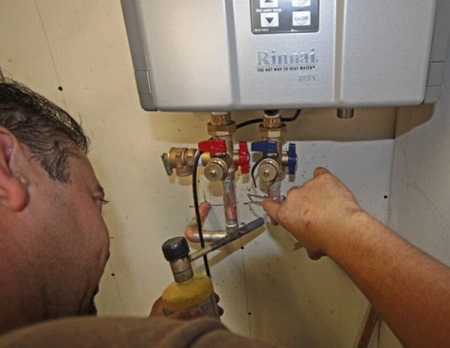How to choose a water heater for an apartment and connect it?
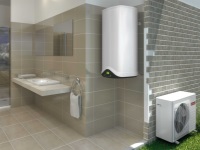
Buying a water heater allows you to not depend on the centralized hot water supply. Apartment owners are especially pleased with such equipment during the planned disconnection of hot water in summer. Note that the variety of modern devices capable of heating water is quite large. Therefore, for a proper choice, you should understand what kinds of water heaters are represented, which of them are more preferable for apartments and what is especially important to consider when buying them.
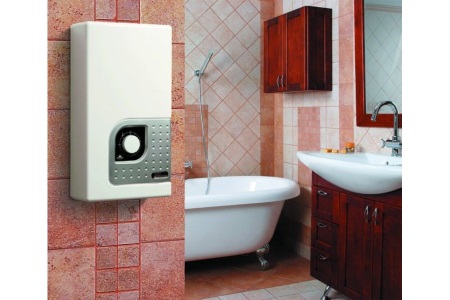
Features
- Water heater allows you to get heated water at any time, with some devices water is heated immediately while flowing, while in others it takes some time to heat it.
- Most often the heating device in the apartment is mounted on the wall, as installation on the floor is used mainly for large and heavy devices with a capacity of over 150 liters. The position of the device can be vertical (more common) and horizontal. Often the heater is mounted hidden, for example, under the sink or in a recess.
- The volume of storage water heaters is represented by a large range - from 5 to 500 liters. In flow-through devices, the main parameter of the efficiency of work is the productivity, specified in liters of heated water per minute.
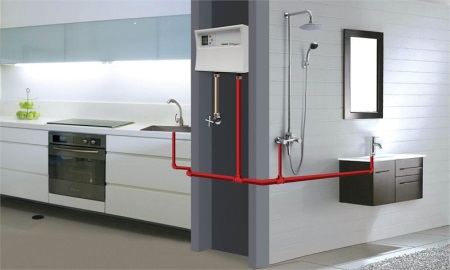
Types
Accumulative
In such devices, water is not only heated, but also retains its temperature for some time, so you can get warm water even after disconnecting the device from the network. Thanks to the thermal insulation of such a device works like a thermos. In addition, one storage heater can provide hot water for the whole apartment. Its work does not require significant power of the electric network and the device of the chimney, as well as constantly high pressure in the water supply system.
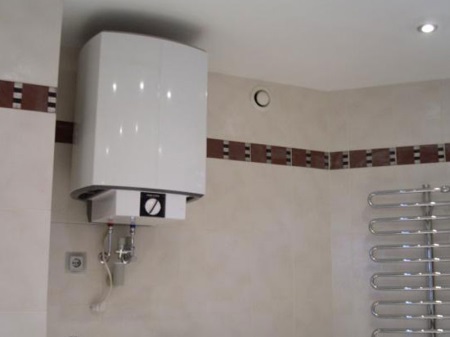
Although storage water heaters can run on electricity and gas, for apartments are more in demand devices that are plugged into the mains. Gas models of such heaters are usually represented by too large a volume, so they are more often purchased not in the city apartment, but for the house, connecting to the heating system.
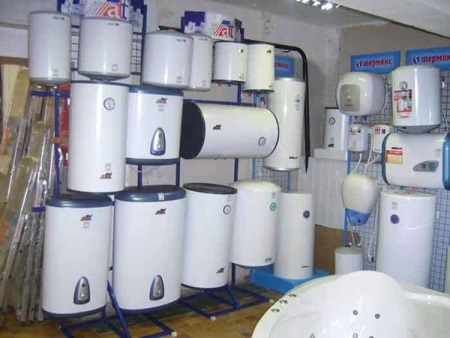
Use a boiler is very simple, but because of its significant size with the selection of space for such equipment can be difficult. Large size is very inconvenient if the device is used for a short time as an alternative source of warm water.
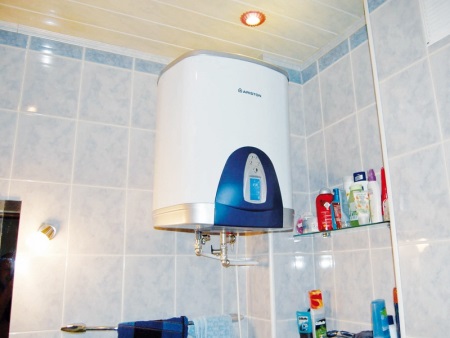
In addition, heating water is not immediate - filled with water boiler should work for at least 20 minutes (and most devices - a few hours) to go from the tap warm water. It should also be noted that the cost of storage devices compared to the flow-through are somewhat higher.
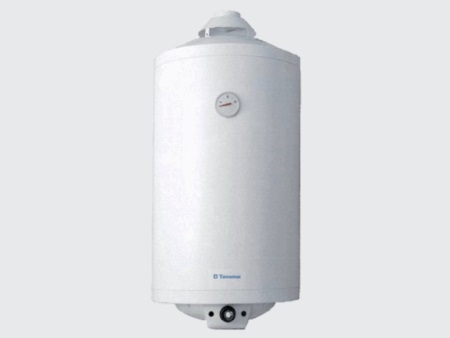
Flow-through
The main advantages of heaters of this type are their compact size and affordable price. Such a device is easy to hang on the wall in the kitchen or hide between the cabinets. They are easy enough to install, and water heating is very fast. Another advantage of the flow heater is the lack of restrictions on the amount of water to be heated. In addition, if the water consumption is small, this device will be more economical than the storage unit, because it will not additionally heat water in the tank.

Depending on the energy source used by the heater of this type is an electric or gas. Flow heaters are also divided into:
- Pressure heaters. Due to being built into the water riser, such devices very quickly heat water, which begins to flow into the tap almost immediately after its opening.
- Unpressurized. Their installation is performed next to the faucet and can be supplemented with a spout and a shower. The main advantage of this type of heaters is their mobility, as the device can be removed or installed when needed. The main disadvantage of the non-pressurized device is the low power (water is heated weakly or the output is up to 3 l/sec). In addition, over time, its heating element begins to work with less heat output.
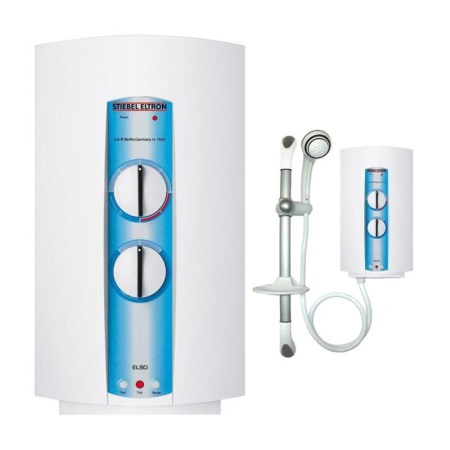
The main disadvantage of a flow-through device that heats water is a significant consumption of energy resources. In addition, its work requires the stability of the gas head (for gas), the voltage in the network (for electric) and the water pressure in the pipes (for pressure). It should also be noted that the flow device can heat water only for one point, and the water temperature at the outlet will not be as high as in the storage equipment.
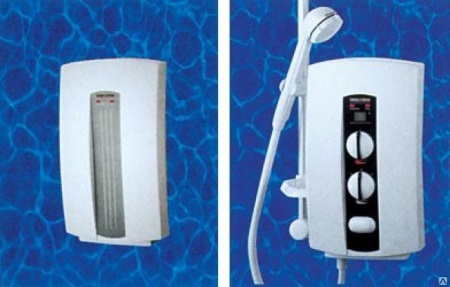
Types according to the type of energy used
Electric
Such heating devices work from the mains and their main part is a heating element. This often copper or steel element is wet if it is in contact with water, as well as dry if the heating element is placed in a hermetically sealed bulb and there is no contact with water.
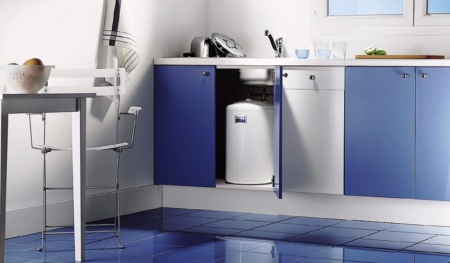
The power of the heating element largely depends on the type of device (flow-through or storage) and on its volume. It directly affects the speed of water heating. The optimum power parameter for a city apartment is considered 2 kW, as it will withstand almost any wiring.
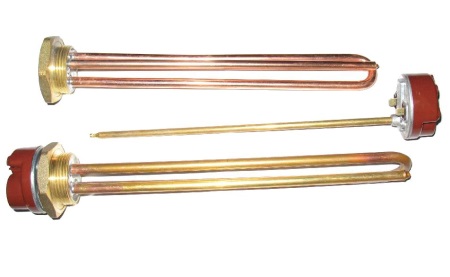
Next to the heating element inside the heater is a magnesium anode for the prevention of corrosion, as well as the temperature sensor, which is needed to control water heating and operation of the heating element through the thermostat.
The tank of an electric storage heater is most often made of steel. To protect the surface of such a tank from corrosion, its walls are treated with different coatings - enamel, titanium sputtering, a layer of bio glass, coating with silver ions, glass ceramic coating. Also many boilers are made of stainless steel.

Gas
Such devices use natural gas for their work, so their main part is represented by a gas burner. The high popularity of such heaters is due to the lower cost of gas, but the installation of such a water heating device is associated with certain difficulties, including the need to have a chimney and obtain permission from the relevant regulatory agency.
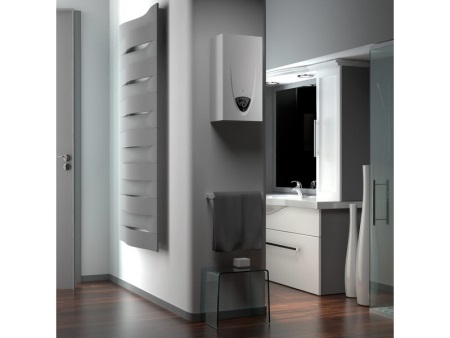
The design of the storage gas heating device, as well as the electric one, has a water tank, a magnesium anode, a safety group, incoming and outgoing spigots. But a distinctive feature is the presence of a combustion chamber, in which the burner is installed. Fuel (natural gas from the main pipeline or liquefied gas from a cylinder) burns in this combustion chamber and the heat from this combustion is transferred to the water.
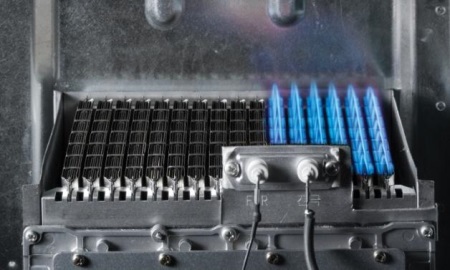
In a gas-fired flow heater (gas heater), there is no tank, and the water is heated while moving through the heat exchanger, which is affected by the heat from the gas burner.
An important part of any gas heater is the flue gas exhaust system. It includes a chimney (in some models it is represented by a coaxial pipe) and safety sensors. When this system is working properly, all harmful products of gas combustion are removed from the apartment to the street.
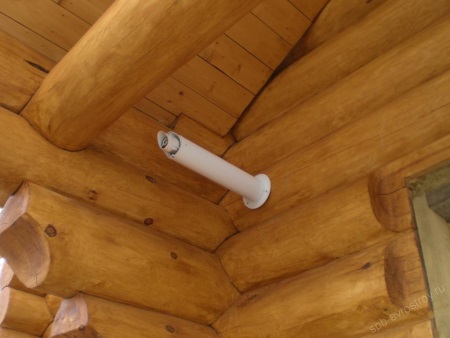
How to choose the right volume?
Tank capacity is an important parameter when choosing a storage heating device, because the boiler must provide hot water for the whole family. For urban apartments, the most in demand are devices with a volume of 50 liters, 80 liters and 100 liters. If you buy a device only for temporary use in the absence of centralized hot water supply or the boiler is needed only in the kitchen for household needs, then look for a model with a capacity of 30 liters.
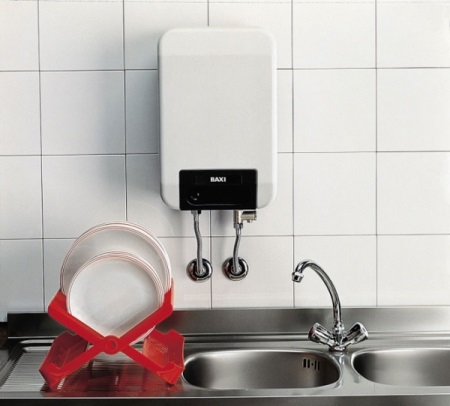
To calculate the optimal tank volume for your family, consider the average expenditure of hot water from the boiler:
- To wash your hands, one person needs 1 to 3 liters of hot water every day.
- Washing is characterized by a consumption of 5 to 8 liters of warm water per day for one family member.
- Washing dishes requires an average of 15 liters of hot water daily.
- One shower wastes about 17 to 25 liters of boiler-heated water.
- Filling one bathtub requires about 80-120 liters of hot water.
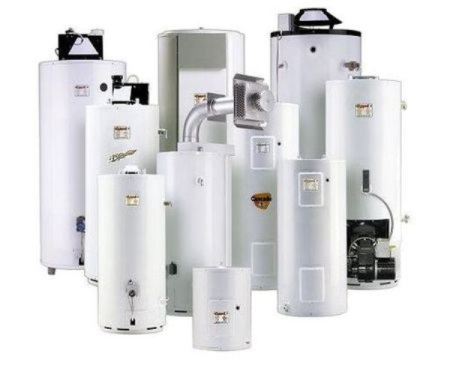
Add up the number of liters needed for each family member. For example, a family of two needs 8*2+25*2+15=81 liters for a morning shower, washing and dishwashing after breakfast. This means that the 80 litre heater will be enough to use hot water in the morning without restriction. It is also enough for washing the dishes after dinner and a hygienic evening shower for both occupants.
If someone wants to take a bath, he will spend all the heated water, so the next family member will have to wait a bit for the heating of a new portion of water.
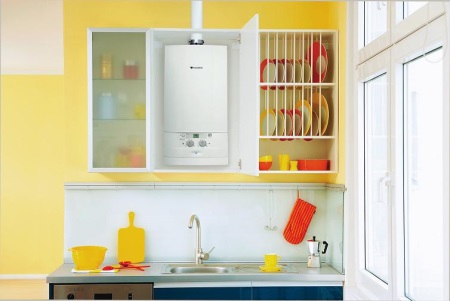
What characteristics to pay attention to?
When choosing a storage device, pay attention to the material of manufacture of its tank (the most high-quality tanks are made of stainless steel) and the thickness of insulation (the optimal is considered from 35 mm). These characteristics are directly related to the weight of the device - if the weight is small, it is often a sign of poor-quality insulation and small thickness of the tank. Also, when buying a boiler you should specify:
- Weight and dimensions of the unit.
- The power of the heating element.
- Time and maximum temperature of water heating.
- Type of installation.
- The presence of safety systems.
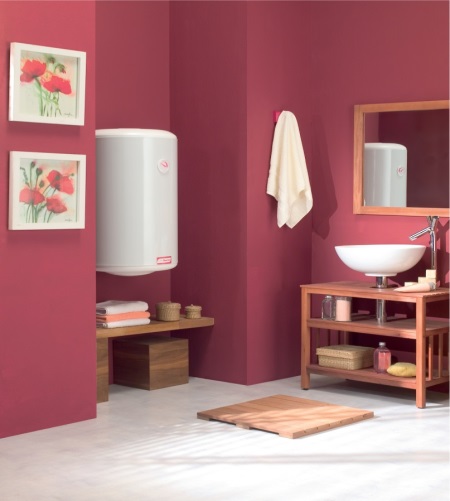
If you are buying a flow heater, find out the capacity of the device. Be sure to ask how much water the selected model will heat for a certain period of time.
Note that some manufacturers are guided by the data that the water temperature +20 º C enters the heater (in fact, the cold water in the pipes of most Russian apartments rarely exceeds +15 º C), others, on the contrary, underestimate their performance, calculating them based on the minimum temperature of water fed into the device within +10 º C.
Note that more accurate data from proven and well-known brands, and the words about the high efficiency of low-end heaters should not be believed.
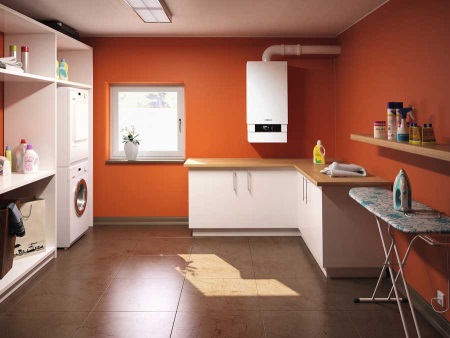
Tips for choice
- First of all, decide on the purpose of using the heater, the frequency of its use, as well as the budget for the purchase. If you buy an expensive appliance, it will last longer, but it will be a pointless waste in a situation where the boiler is going to be used a week or two a year.
- Next, decide where you are going to install the appliance. Measure the wall and determine the allowable dimensions of the equipment, and make sure that the wall will support the weight of the heater you buy. Horizontal device is more compact, as well as the flat model of the boiler, but such devices are more expensive than conventional cylindrical vertical units.
- Choosing the right type of electric heater, take into account the state of the wiring in your apartment and make sure that it will be able to withstand the load created by the device. This is especially important when buying a flow heater, because it consumes electricity in a much larger amount than a boiler.

Try to choose the right boiler or other water heater from a range of well-known brands, the quality of which is at a high level. Find out about the manufacturer's warranty period, repair availability (service center availability, prices for replacement parts), and customer reviews. Take your time, compare prices and features, and then choose the best option for you.
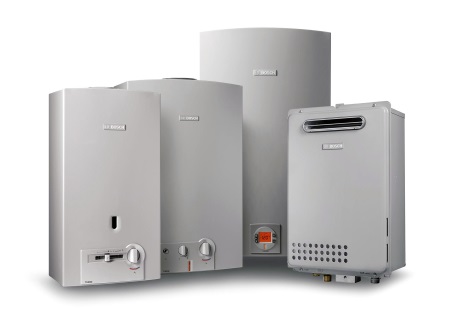
Wiring diagrams and stages of installation of an electric boiler
Install the boiler is quite simple, so with such a task you can handle yourself:
- Choosing a suitable place for the device, it is mounted on the wall with the help of special brackets. Two holes are drilled in the wall for dowels, into which the brackets are screwed.
- Connect the appliance to the water supply system with flexible pipes. Connect the cold water supply to the inlet pipe of the boiler, and the outlet pipe connect to the faucet. Also perform the installation of the safety group. After that it is important to check all connections for leaks.
- Connect the device to the power supply. Usually a separate line and RCD device is used for this purpose.
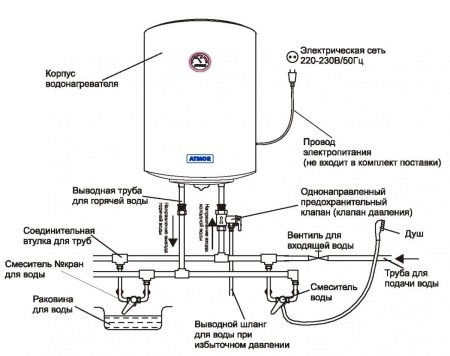
How to properly connect the boiler, you can see in the following video, which is described in detail and shown as an example.
Maintenance
Any water heater needs regular preventive maintenance to protect it from breakdowns. Every year or every two years, the magnesium anode in the boiler should be replaced. At the same time with this replacement, the inner tank of the heater and the heating element should be cleaned of scale.
